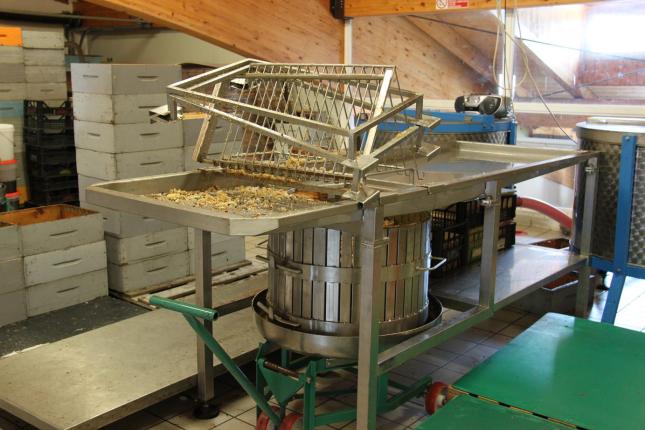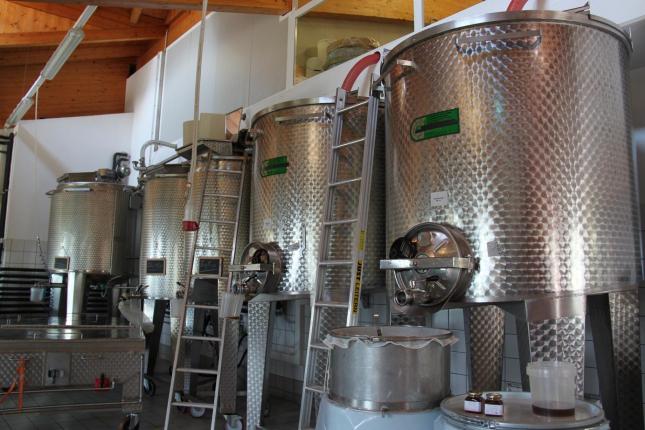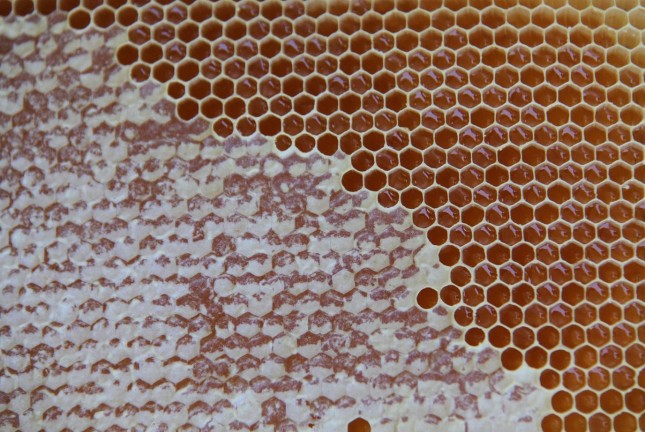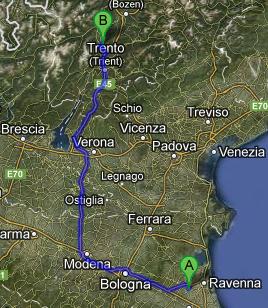
After a break, we’re ready to tell you other wonderful things about Italian food and wine.
We restarted in the best way, with a dream visit at the famous company Mieli Thun, which makes honey of the highest quality and is located in Val di Non.
When we arrived, feeling peaceful thanks to the perfect weather and landscape that sourrounded us, we were stunned by the beauty of the building – where you can find the offices, the machinery for the processing of honey, a shop called “A_tipico” (“A_typical”) where they sell products made by excellent friends from all over Italy, and “Honey Park”, an area where you can find – and taste – both the jars of honey by Mieli Thun and the ones by other national and worldwide producers, in addition to different kinds of products that contain honey.
After taking a peek, Andrea Paternoster – owner of the company – took us out for a quick visit to the Thun Castle, in order for us to have an idea of the environment in which the company is located… it’s always a huge emotion to overlook the valley from the balcony of a castle, and from there you can understand how this can become a source of inspiration for realizing one’s own life projects!
The company takes life from Andrea’s devotion for the bees and their world. He perfectly knows them, he aknowledges their enormous talents, he knows how precious they are for our ecosystem and when he talks you can feel that he’s thankful for this reason. He interacts with them without fear but, on the contrary, with deep love – so much that at a certain point he tells us that, if he could, he would kiss all of them!
The company, deeply rooted in this enormous passion, proposed a re-evaluation of honey to all the people that used to consider it only as a cure for sorethroat. Andrea, who perfectly knows all the qualities and characteristics of the mono-floral kinds of honey that can be obtained, looked for a way to communicate them also to the not-insiders, conveying the message that honey is much more than people think. It’s nobler, more versatile, more precious, more multifaceted, “younger”, richer in potential.
So he chose the places where to put the hives – literally located all over Italy, starting from the cold northern mountains to get to the hot sicilian valleys – and he spends his life moving up and down the Country in order to follow and help the job of his beloved bees.
During our visit, we had the chance to personally observe how these insects busily work, building perfect wax cells, every one of which is hexagonal and has a gradient of 13° – the ideal slope to prevent the honey from drain out – that then will be filled with the queen bee’s eggs or with pollen or honey by the worker bees.
We managed to see the bees while carrying pollen agglomerates, the marking of the queen bee by Andrea – who in this way will recognize her in the next years – and also the birth of a bee! Not only, but from the upper part of the hive – the one that hosts the frames where the bees will deposit honey – we took out a comb full of millefiori (multi-floral) honey and we enjoyed the privilege of tasting the honey that directly poured from it. These experiences don’t happen every day, and they leave us open-mouthed! Nature is something superlative…
From the hives in the various locations, Andrea goes and collects the combs full of honey, in different periods of time based on the flowering of plants. The comb is then scratched with a sort of a fork, in order to remove the wax that plugs the cells, and then it’s spinned so that the honey can come out. The wax is then pressed in order to extract even the last drops of honey, then it’s processed by other companies.
The honey subsequently slides in a serie of descending pipes, until it gets to a tank where it’s stored at a temperature of about 14 Celsius degrees, before being filtered and then left to settle in very wide basins.
The different kinds of honey by Mieli Thun are not processed in any way, not even pasteurized: they stay exactly the same product that the bees have made. Before the confection, they’re brought to crystallization, so that they can release their flavours, then they’re taken to room temperature in order to preserve their qualities in the best way. Honey could already be preserved potentially forever, so it’s perfect and it doesn’t need anything more than the properties that bees already gave to it.
We have to point out that the labels are put on the jars one by one by hand… the employees of Mieli Thun are busy workers just as the bees!
Our visit to the company ended with a wonderful honey tasting. Elegantly put into small goblets, whe warmed them up by moving them with a spoon in order to appreciate their olfactory flavours in the best way – and we found out that, for exemple, dandelion’s honey smells like vinegar and eucalyptus’ one as dried boletus mushrooms! – and in the end we tasted them, fully realizing how many different shades of flavour they can offer, and letting ourselves go into the sceneries that they evoked.
Andrea’s purpose is to hold in his different kinds of honey the taste of the pure flower nectar, and after this tasting we can testify that he totally made it.
There are really a lot of types of honey by Mieli Thun, both mono and multi floral, and they also offer a serie – called “Quintessenza” (Quintessence) – that contains the best of mono-floral honey obtained from their beekeeping: the combs are collected in the very few specific days when the flowering is at its peak, so the honey is as possible pure and not contaminated by the nectar of other flowers.
I’m not exaggerating if I say that tasting one of the kinds of honey by Mieli Thun is really like to directly suck the nectar out of the flower… in this case too, what makes a difference and permits to reach an excellent quality is the total devotion to one’s world – here the beekeeping – and the absolute simplicity – without intervening in the already perfect bee’s product.
Are you curious to try these types of honey and to let them surprise you? So all you have to do is to step by La Delizia in Russi (Ravenna) and provide yourself with some jars… we wait for you!



















